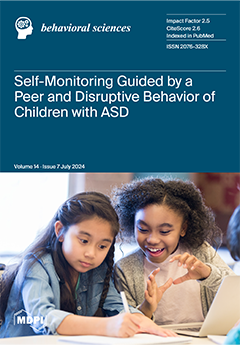Background: Multiple sclerosis (MS) is one of the most debilitating neurodegenerative diseases in youth, significantly affecting all life domains. Therefore, a strong association between MS, depression and anxiety symptoms has been established. The objective of the present interventional one-group pretest–posttest study is to
[...] Read more.
Background: Multiple sclerosis (MS) is one of the most debilitating neurodegenerative diseases in youth, significantly affecting all life domains. Therefore, a strong association between MS, depression and anxiety symptoms has been established. The objective of the present interventional one-group pretest–posttest study is to assess the feasibility of an online single-session intervention (SSI) based on a cognitive behavioral therapy protocol targeting depressive and anxiety symptoms, psychological mechanisms, fatigue and overall health status.
Methods: In this pilot study, 31 patients with MS (M
age = 42 years, SD = 12.2) received the online CBT SSI. The impact of the intervention was assessed using validated instruments two weeks after the intervention and after a two-month follow-up period.
Results: Statistically significant effects were observed for the reduction of depression, with B
= −7.58, 95% CI (−12.84, −2.31) and
p < 0.01, and anxiety, with B = −15.17, 95% CI (−18.31, −12.02) and
p < 0.001, at post-test and follow-up screening. Additionally, positive outcomes were seen for irrational beliefs at post-test, with B = −25.86, 95% CI (−46.10, −5.61), along with negative automatic thoughts, with B = −4.47, 95% CI (−10.65, 1.71), which were preserved at follow-up. Despite the health status also improving, no significant changes were observed for dysfunctional attitudes and fatigue.
Conclusions: This research proves that the online CBT SSI was efficient for decreasing mild to moderate symptoms of depression and anxiety and reducing the intensity of dysfunctional psychological mechanisms in our sample.
Full article






